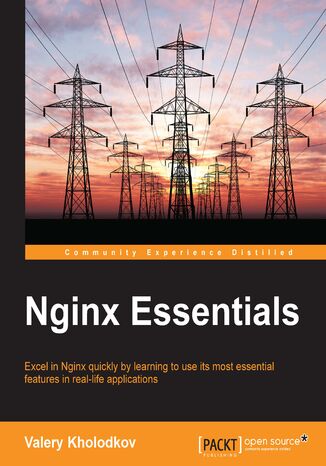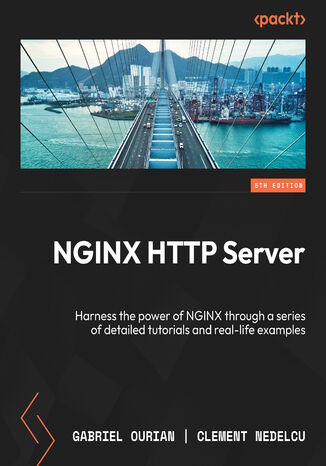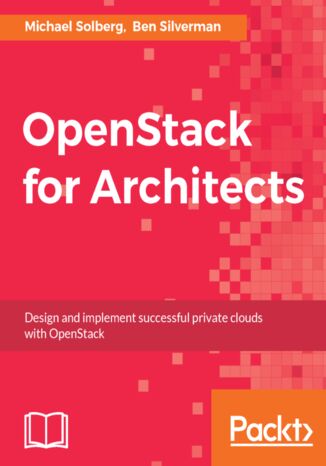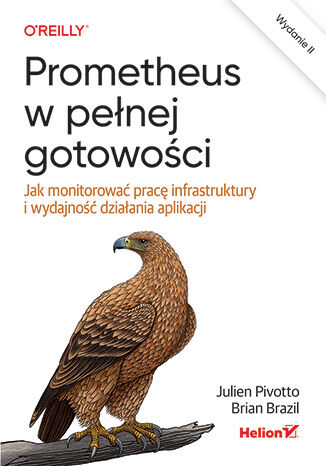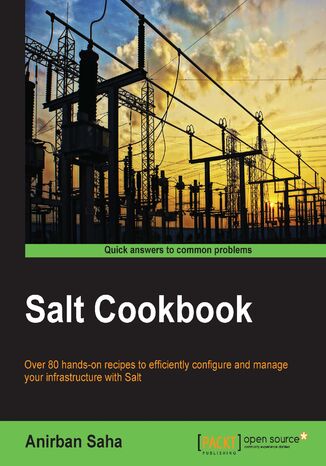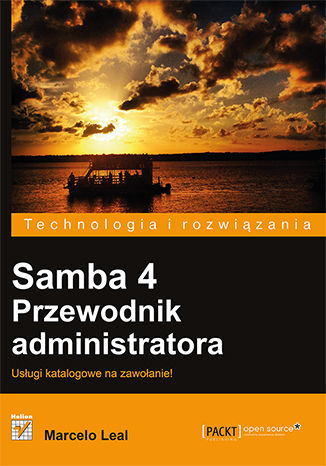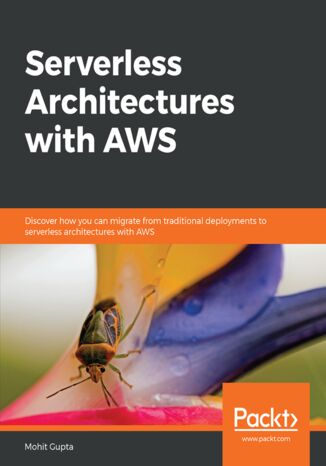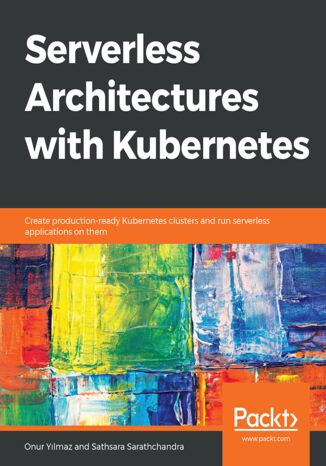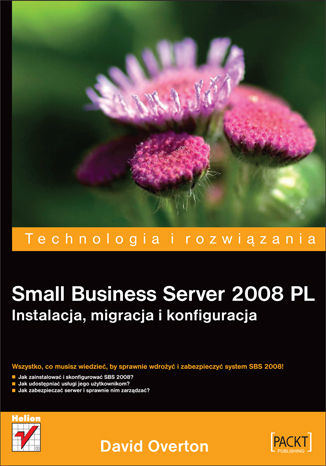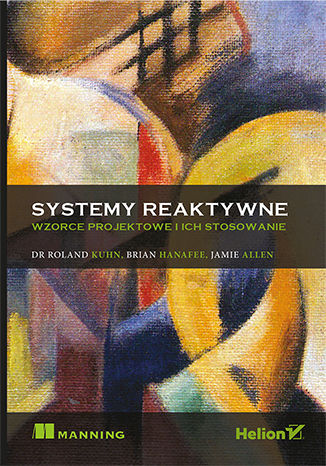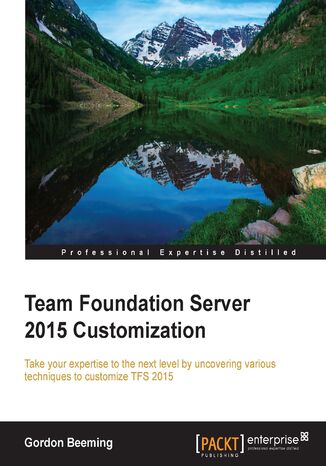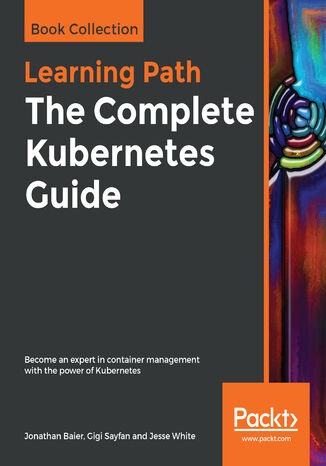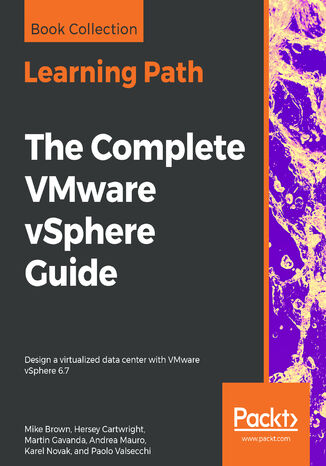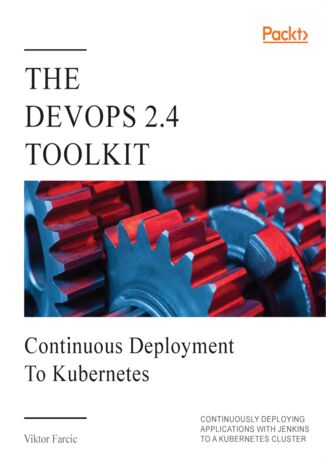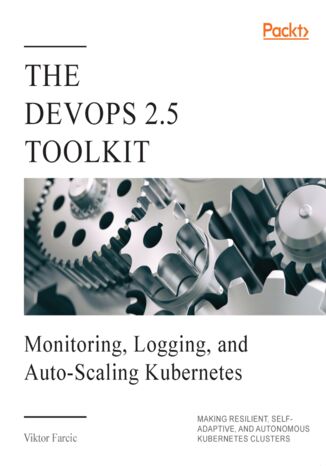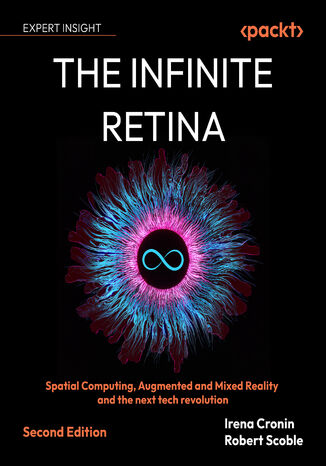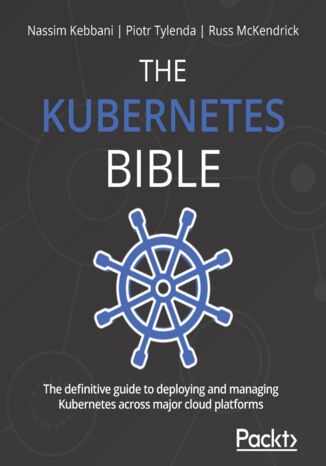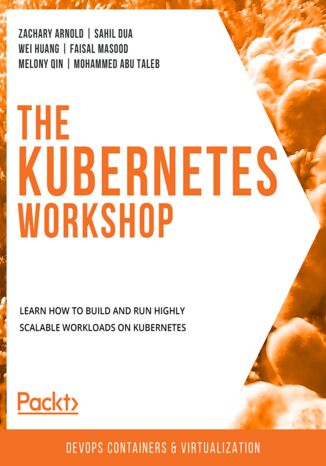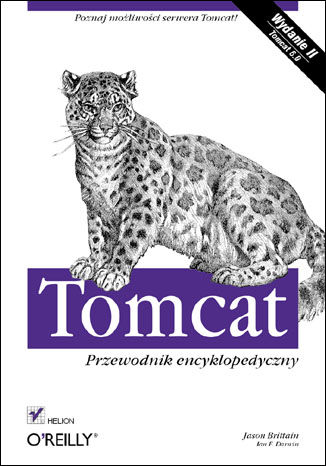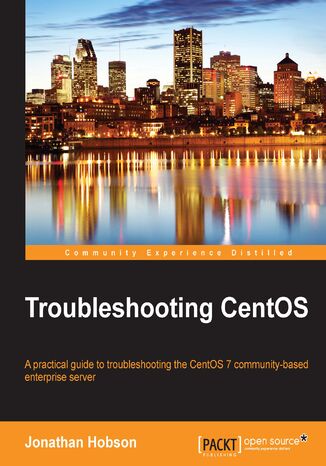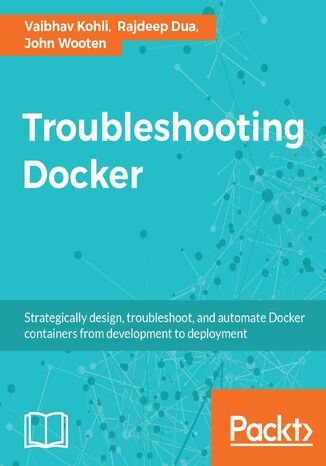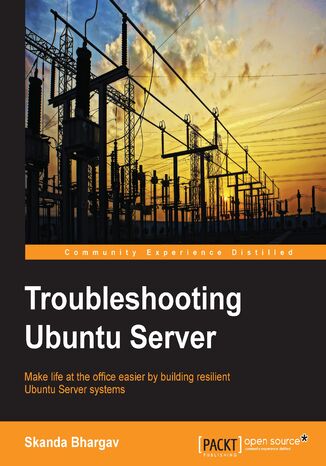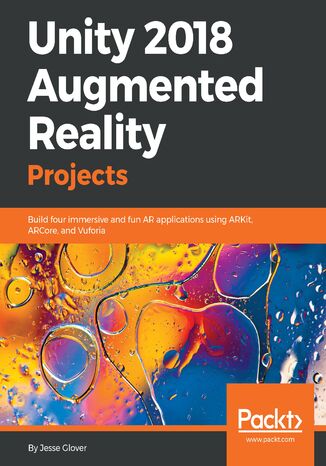Categories
Ebooks
-
Business and economy
- Bitcoin
- Businesswoman
- Coaching
- Controlling
- E-business
- Economy
- Finances
- Stocks and investments
- Personal competence
- Computer in the office
- Communication and negotiation
- Small company
- Marketing
- Motivation
- Multimedia trainings
- Real estate
- Persuasion and NLP
- Taxes
- Social policy
- Guides
- Presentations
- Leadership
- Public Relation
- Reports, analyses
- Secret
- Social Media
- Sales
- Start-up
- Your career
- Management
- Project management
- Human Resources
-
For children
-
For youth
-
Education
-
Encyclopedias, dictionaries
-
E-press
- Architektura i wnętrza
- Health and Safety
- Biznes i Ekonomia
- Home and garden
- E-business
- Ekonomia i finanse
- Esoterecism
- Finances
- Personal finance
- Business
- Photography
- Computer science
- HR & Payroll
- For women
- Computers, Excel
- Accounts
- Culture and literature
- Scientific and academic
- Environmental protection
- Opinion-forming
- Education
- Taxes
- Travelling
- Psychology
- Religion
- Agriculture
- Book and press market
- Transport and Spedition
- Healthand beauty
-
History
-
Computer science
- Office applications
- Data bases
- Bioinformatics
- IT business
- CAD/CAM
- Digital Lifestyle
- DTP
- Electronics
- Digital photography
- Computer graphics
- Games
- Hacking
- Hardware
- IT w ekonomii
- Scientific software package
- School textbooks
- Computer basics
- Programming
- Mobile programming
- Internet servers
- Computer networks
- Start-up
- Operational systems
- Artificial intelligence
- Technology for children
- Webmastering
-
Other
-
Foreign languages
-
Culture and art
-
School reading books
-
Literature
- Antology
- Ballade
- Biographies and autobiographies
- For adults
- Dramas
- Diaries, memoirs, letters
- Epic, epopee
- Essay
- Fantasy and science fiction
- Feuilletons
- Work of fiction
- Humour and satire
- Other
- Classical
- Crime fiction
- Non-fiction
- Fiction
- Mity i legendy
- Nobelists
- Novellas
- Moral
- Okultyzm i magia
- Short stories
- Memoirs
- Travelling
- Narrative poetry
- Poetry
- Politics
- Popular science
- Novel
- Historical novel
- Prose
- Adventure
- Journalism, publicism
- Reportage novels
- Romans i literatura obyczajowa
- Sensational
- Thriller, Horror
- Interviews and memoirs
-
Natural sciences
-
Social sciences
-
School textbooks
-
Popular science and academic
- Archeology
- Bibliotekoznawstwo
- Cinema studies
- Philology
- Polish philology
- Philosophy
- Finanse i bankowość
- Geography
- Economy
- Trade. World economy
- History and archeology
- History of art and architecture
- Cultural studies
- Linguistics
- Literary studies
- Logistics
- Maths
- Medicine
- Humanities
- Pedagogy
- Educational aids
- Popular science
- Other
- Psychology
- Sociology
- Theatre studies
- Theology
- Economic theories and teachings
- Transport i spedycja
- Physical education
- Zarządzanie i marketing
-
Guides
-
Game guides
-
Professional and specialist guides
-
Law
- Health and Safety
- History
- Road Code. Driving license
- Law studies
- Healthcare
- General. Compendium of knowledge
- Academic textbooks
- Other
- Construction and local law
- Civil law
- Financial law
- Economic law
- Economic and trade law
- Criminal law
- Criminal law. Criminal offenses. Criminology
- International law
- International law
- Health care law
- Educational law
- Tax law
- Labor and social security law
- Public, constitutional and administrative law
- Family and Guardianship Code
- agricultural law
- Social law, labour law
- European Union law
- Industry
- Agricultural and environmental
- Dictionaries and encyclopedia
- Public procurement
- Management
-
Tourist guides and travel
- Africa
- Albums
- Southern America
- North and Central America
- Australia, New Zealand, Oceania
- Austria
- Asia
- Balkans
- Middle East
- Bulgary
- China
- Croatia
- The Czech Republic
- Denmark
- Egipt
- Estonia
- Europe
- France
- Mountains
- Greece
- Spain
- Holand
- Iceland
- Lithuania
- Latvia
- Mapy, Plany miast, Atlasy
- Mini travel guides
- Germany
- Norway
- Active travelling
- Poland
- Portugal
- Other
- Przewodniki po hotelach i restauracjach
- Russia
- Romania
- Slovakia
- Slovenia
- Switzerland
- Sweden
- World
- Turkey
- Ukraine
- Hungary
- Great Britain
- Italy
-
Psychology
- Philosophy of life
- Kompetencje psychospołeczne
- Interpersonal communication
- Mindfulness
- General
- Persuasion and NLP
- Academic psychology
- Psychology of soul and mind
- Work psychology
- Relacje i związki
- Parenting and children psychology
- Problem solving
- Intellectual growth
- Secret
- Sexapeal
- Seduction
- Appearance and image
- Philosophy of life
-
Religion
-
Sport, fitness, diets
-
Technology and mechanics
Audiobooks
-
Business and economy
- Bitcoin
- Businesswoman
- Coaching
- Controlling
- E-business
- Economy
- Finances
- Stocks and investments
- Personal competence
- Communication and negotiation
- Small company
- Marketing
- Motivation
- Real estate
- Persuasion and NLP
- Taxes
- Social policy
- Guides
- Presentations
- Leadership
- Public Relation
- Secret
- Social Media
- Sales
- Start-up
- Your career
- Management
- Project management
- Human Resources
-
For children
-
For youth
-
Education
-
Encyclopedias, dictionaries
-
E-press
-
History
-
Computer science
-
Other
-
Foreign languages
-
Culture and art
-
School reading books
-
Literature
- Antology
- Ballade
- Biographies and autobiographies
- For adults
- Dramas
- Diaries, memoirs, letters
- Epic, epopee
- Essay
- Fantasy and science fiction
- Feuilletons
- Work of fiction
- Humour and satire
- Other
- Classical
- Crime fiction
- Non-fiction
- Fiction
- Mity i legendy
- Nobelists
- Novellas
- Moral
- Okultyzm i magia
- Short stories
- Memoirs
- Travelling
- Poetry
- Politics
- Popular science
- Novel
- Historical novel
- Prose
- Adventure
- Journalism, publicism
- Reportage novels
- Romans i literatura obyczajowa
- Sensational
- Thriller, Horror
- Interviews and memoirs
-
Natural sciences
-
Social sciences
-
Popular science and academic
-
Guides
-
Professional and specialist guides
-
Law
-
Tourist guides and travel
-
Psychology
- Philosophy of life
- Interpersonal communication
- Mindfulness
- General
- Persuasion and NLP
- Academic psychology
- Psychology of soul and mind
- Work psychology
- Relacje i związki
- Parenting and children psychology
- Problem solving
- Intellectual growth
- Secret
- Sexapeal
- Seduction
- Appearance and image
- Philosophy of life
-
Religion
-
Sport, fitness, diets
-
Technology and mechanics
Videocourses
-
Data bases
-
Big Data
-
Biznes, ekonomia i marketing
-
Cybersecurity
-
Data Science
-
DevOps
-
For children
-
Electronics
-
Graphics/Video/CAX
-
Games
-
Microsoft Office
-
Development tools
-
Programming
-
Personal growth
-
Computer networks
-
Operational systems
-
Software testing
-
Mobile devices
-
UX/UI
-
Web development
-
Management
Podcasts
- Ebooks
- Computer science
- Internet servers
Internet servers
In our digital library you will find books that cover the basics of installing, configuring and managing servers. In addition, they accurately explain such technologies as Azure Cloud, OpenDaylight, Docker and Samba. Thanks to these manuals, web servers will have no secrets from you.
Gabriel Ouiran, Clement Nedelcu, Martin Bjerretoft Fjordvald
Explore the capabilities of NGINX, a robust HTTP server designed for handling high-traffic websites, with network scalability as its primary objective. Whether you’re a beginner or an experienced administrator, this NGINX book will guide you through the complete process of setting up this lightweight HTTP server, from quick and basic configurations to more detailed configurations tailored to your needs. Highlighting the latest version 1.25.2, featuring new features such as HTTP/3 and QUIC, this edition keeps you up to date with cutting-edge developments.This book is packed with a multitude of real-world examples, which will help you secure your infrastructure with automatic TLS certificates, expertly place NGINX in front of your existing applications, and do much more. From orchestration and Docker to bandwidth management, OpenResty, and NGINX Plus commercial features, you’ll get to grips with enhancing and optimizing your infrastructure or designing brand-new architecture. Moreover, this updated edition will show you how NGINX excels in cloud environments with guides on integrating NGINX with cloud services for deploying scalable architectures efficiently and securely.By the end of this book, you’ll be able to adapt and use a wide variety of NGINX implementations to tackle diverse challenges with confidence.
OpenStack for Architects. Design and implement successful private clouds with OpenStack
Michael Solberg, Benjamin Silverman
Over the last five years, hundreds of organizations have successfully implemented Infrastructure as a Service (IaaS) platforms based on OpenStack. The huge amount of investment from these organizations, industry giants such as IBM and HP, as well as open source leaders such as Red Hat have led analysts to label OpenStack as the most important open source technology since the Linux operating system. Because of its ambitious scope, OpenStack is a complex and fast-evolving open source project that requires a diverse skill-set to design and implement it.This guide leads you through each of the major decision points that you'll face while architecting an OpenStack private cloud for your organization. At each point, we offer you advice based on the experience we've gained from designing and leading successful OpenStack projects in a wide range of industries. Each chapter also includes lab material that gives you a chance to install and configure the technologies used to build production-quality OpenStack clouds. Most importantly, we focus on ensuring that your OpenStack project meets the needs of your organization, which will guarantee a successful rollout.
Monitorowanie wydajności systemu jest ważnym zadaniem i nie polega tylko na obserwacji pracy procesora. Trzeba się orientować, pod jakim obciążeniem pracuje baza danych, czy przepustowość urządzeń sieciowych jest wystarczająca i jaki jest koszt niepełnego użycia bufora. Warto też wiedzieć, czy stopień wykorzystania droższych elementów uzasadnia ich utrzymywanie. W tej książce znajdziesz bezcenne wskazówki dotyczące wdrażania serwera Prometheus i jego używania w rzeczywistych rozwiązaniach. Julius Volz, współtwórca oprogramowania Prometheus To drugie, zaktualizowane wydanie przewodnika po systemie Prometheus. Znajdziesz w nim wyczerpujące wprowadzenie do tego oprogramowania, a także wskazówki dotyczące monitorowania aplikacji i infrastruktury, tworzenia wykresów, przekazywania ostrzeżeń, bezpośredniej instrumentacji kodu i pobierania wskaźników pochodzących z systemów zewnętrznych. Zrozumiesz zasady konfiguracji systemu Prometheus, komponentu Node Exporter i menedżera ostrzeżeń Alertmanager. Zapoznasz się też z nowymi funkcjonalnościami języka PromQL, dostawców mechanizmu odkrywania usług i odbiorców menedżera ostrzeżeń Alertmanager. Dokładnie zaprezentowano tu również zagadnienia bezpieczeństwa po stronie serwera, w tym mechanizm TLS i uwierzytelniania podstawowego. W książce między innymi: czym jest Prometheus i jak wygląda jego architektura monitorowanie infrastruktury za pomocą komponentów takich jak Node Exporter instrumentacja w kodzie aplikacji tworzenie paneli sterowania za pomocą Grafany współpraca oprogramowania Prometheus i Kubernetes Dzięki najlepszym praktykom i wskazówkom dotyczącym instrumentacji w kodzie ta książka pomoże Ci w niezawodnym monitorowaniu usług! TJ Hoplock, starszy inżynier monitorowania, NS1
Samba 4. Przewodnik administratora
Usługi katalogowe na Twoje zawołanie! Usługa Active Directory jest implementacją protokołu LDAP i została wprowadzona na rynek wraz z premierą systemu Windows 2000. Stanowi ona kluczowy element organizacji usług w firmach. Dzięki niej można przechowywać informacje o komputerach, użytkownikach i innych urządzeniach w ramach organizacji. Jednym z kluczowych zadań Active Directory jest uwierzytelnianie elementów podłączonych do domeny. Jeżeli chcesz wdrożyć w Twojej firmie usługę Active Directory, możesz wykorzystać płatne rozwiązania giganta z Redmond lub pokusić się o wdrożenie darmowej alternatywy. Samba doskonale sprawdza się w roli kontrolera domeny. W trakcie lektury tej książki zdobędziesz dogłębną wiedzę na temat jej stosowania. Na samym początku odkryjesz, jak zainstalować serwer Samba 4 oraz nim zarządzać. Z kolejnych rozdziałów dowiesz się, jak zastąpić istniejący kontroler domeny współpracujący z systemem Windows przez system z Sambą 4. Ponadto w książce znajdziesz szczegółowe informacje na temat aktualizacji Samby, rozbudowy schematu Active Directory oraz implementacji rozproszonego serwera plików o wysokiej dostępności. Książka ta jest obowiązkową lekturą dla administratorów i pasjonatów, chcących wdrożyć usługę Active Directory z użyciem darmowych rozwiązań. Dzięki tej książce: poznasz możliwości usługi Active Directory wdrożysz tę usługę z wykorzystaniem Samby zastąpisz kontroler domeny współpracujący z systemem Windows uruchomisz serwer plików i wydruków Poznaj potencjał serwera Samba!
Serverless Architecture with AWS begins with an introduction to the serverless model and helps you get started with AWS and Lambda. You'll also get to grips with other capabilities of the AWS Serverless Platform and see how AWS supports enterprise-grade serverless applications with and without Lambda.This book will guide you in deploying your first serverless project and exploring the capabilities of serverless Amazon Athena, an interactive query service that makes it easy to analyze data in Amazon Simple Storage Service (S3 Amazon) using standard SQL. You’ll also learn about AWS Glue, a fully managed ETL service that makes categorizing data easy and cost-effective. You'll study how Amazon Kinesis makes it possible to unleash the potential of real-time data insights and analytics with capabilities such as video streams, data streams, data firehose, and data analytics. Last but not least, you’ll be equipped to combine Amazon Kinesis capabilities with AWS Lambda to create lightweight serverless architectures.By the end of the book, you will be ready to create and run your first serverless application that takes advantage of the high availability, security, performance, and scalability of AWS.
Onur Yilmaz, Sathsara Sarathchandra
Kubernetes has established itself as the standard platform for container management, orchestration, and deployment. By learning Kubernetes, you’ll be able to design your own serverless architecture by implementing the function-as-a-service (FaaS) model.After an accelerated, hands-on overview of the serverless architecture and various Kubernetes concepts, you’ll cover a wide range of real-world development challenges faced by real-world developers, and explore various techniques to overcome them. You’ll learn how to create production-ready Kubernetes clusters and run serverless applications on them. You'll see how Kubernetes platforms and serverless frameworks such as Kubeless, Apache OpenWhisk and OpenFaaS provide the tooling to help you develop serverless applications on Kubernetes. You'll also learn ways to select the appropriate framework for your upcoming project. By the end of this book, you’ll have the skills and confidence to design your own serverless applications using the power and flexibility of Kubernetes.
Small Business Server 2008 PL. Instalacja, migracja i konfiguracja
Wszystko, co musisz wiedzieć, by sprawnie wdrożyć i zabezpieczyć system SBS 2008! Jak zainstalować i skonfigurować SBS 2008? Jak udostępniać usługi jego użytkownikom? Jak zabezpieczać serwer i sprawnie nim zarządzać? Wiele praktycznych technologii w ramach jednej licencji, większa wydajność serwera, możliwość pracy zdalnej, bezpieczeństwo poczty i szybki dostęp do potrzebnych danych — oto główne powody, dla których małe, dynamicznie rozwijające się firmy decydują się na wdrożenie systemu Small Business Server. Mogą wówczas cieszyć się tym wszechstronnym, a zarazem niewymagającym stałej i bieżącej obsługi rozwiązaniem Microsoftu za naprawdę rozsądne pieniądze. Nic zatem dziwnego, że system ten staje się coraz bardziej popularny, a co za tym idzie — specjaliści od jego wdrażania są coraz bardziej poszukiwani! Właściciele firm uświadomili sobie, że tylko poprawne wdrożenie tego typu systemów gwarantuje oczekiwane przez nich korzyści biznesowe i odpowiedni poziom bezpieczeństwa tak dzisiaj cennych informacji. Ta książka to doskonały podręcznik dla wszystkich osób, przed którymi stoi zadanie pierwszej instalacji, konfiguracji bądź obsługi systemu SBS 2008, oraz dla tych, które migrują z serwera SBS 2003. Dzięki niej krok po kroku poznasz instalację Small Business Serwer 2008 — zarówno jako pierwszego serwera w organizacji, jak i nowego serwera w firmie korzystającej dotąd z SBS 2003. Opisane tu zostały między innymi kwestie instalowania systemu operacyjnego i komponentów SBS, migracji ustawień sieciowych, tworzenia konta administratora i serwera nazw, instalowania narzędzi ochronnych oraz sprawnego rozwiązywania najczęściej spotykanych problemów. Dowiesz się również, jak właściwie przeprowadzać migrację kont użytkowników czy aplikacji biznesowych, konfigurować sieć VPN i domeny internetowe dla zdalnego dostępu oraz poczty elektronicznej, wprowadzać niezawodną ochronę danych na serwerze, a także tworzyć i testować kopie zapasowe. Jak krok po kroku zainstalować i skonfigurować system SBS 2008? Jak przeprowadzić migrację z SBS 2003 na SBS 2008? Jak uzyskać bezpieczną konfigurację sieci lokalnej i dostępu z Internetu? Jak korzystać z narzędzi pracy grupowej, opartych na serwerze SharePoint? Jak umożliwić użytkownikom wydajną pracę zdalną poza biurem? Jak zabezpieczać sieć, pocztę i dane na serwerze? Jak sprawnie zarządzać systemem, by zawsze działał bez zarzutu? Opanuj proces instalacji i konfiguracji niezawodnego serwera dla małych firm!
Systemy reaktywne. Wzorce projektowe i ich stosowanie
Roland Kuhn Dr., Brian Hanafee, Jamie Allen
Systemy reaktywne. Wzorce projektowe i ich stosowanie Uznane duże aplikacje internetowe, takie jak portale społecznościowe, systemy bankowe czy handlowe, działają szybko i niezawodnie. Muszą radzić sobie nawet wtedy, gdy ich niektóre części ulegną awarii. Nie mogą zawieść, gdy będzie z nich korzystać większa liczba użytkowników niż zwykle. Naturalnie, muszą być odporne na różne zagrożenia, a oprócz tego skalowalne i łatwe w rozbudowie. Tym i wielu innym wymaganiom odpowiadają systemy responsywne — które bez względu na okoliczności sprawnie przetwarzają dane wprowadzane przez użytkowników. Pomyślne wdrożenie systemu reaktywnego wymaga jednak nieco innego spojrzenia na tworzenie oprogramowania. Jakie cechy wyrózniają system reaktywny? O tym mówi tzw. Manifest reaktywny i jego podstawowe 4 postulaty: responsywność - system musi reagować na interakcje użytkowników, niezawodność - system musi reagować na awarie i być dostępny non stop, elastyczność - system musi reagować na zmieniające się obciążenie, sterowanie za pomocą komunikatów - system musi reagować na wprowadzane dane. Niniejsza książka jest wyczerpującym wprowadzeniem do implementacji systemów reaktywnych. Opisano tu filozofię programowania reaktywnego, zasady projektowania aplikacji, wzorce projektowe i ich zastosowanie. Szczegółowo wyjaśniono, jakie problemy można rozwiązywać w ten sposób, a podane przykłady opatrzono pełnymi kodami źródłowymi. Bazując na postulatach Manifestu reaktywnego, przedstawiono metodykę budowy architektury modułowej, zasady tworzenia komunikatów, które sterują tą architekturą, opisano też potrzebne narzędzia i sposób ich wykorzystania. Nie zabrakło informacji o dobrych praktykach programowania i testowaniu aplikacji. Na pewno do lektury przyda Ci się znajomość podstawowych zagadnień programistycznych i pewne doświadczenie w pracy z systemami rozproszonymi. Najważniejsze zagadnienia w książce: manifest reaktywny i jego postulaty hierarchia modułów i przepływy danych programowanie funkcyjne i reaktywne obsługa awarii wzorce projektowe i ich stosowanie Systemy reaktywne — odpowiedź na wyzwania naszych czasów! Dr Roland Kuhn jest ekspertem w dziedzinie rozproszonych systemów obliczeniowych. Obronił doktorat w instytucie CERN w Szwajcarii. Później pracował dla Niemieckiej Agencji Kosmicznej. Obecnie tworzy systemy reaktywne. Brian Hanafee jest głównym architektem systemów w Wells Fargo Bank. Wcześniej tworzył nowe produkty dla Oracle i pisał oprogramowanie do systemów wizyjnych montowanych w hełmach pilotów samolotów wojskowych. Jamie Allen jest programistą i architektem oprogramowania. Pracuje jako dyrektor techniczny projektu platformy handlowej UCP w Starbucks. Od 2008 r. tworzy w języku Scala reaktywne aplikacje dla klientów na całym świecie.
Tablice informatyczne. MS Windows Server 2008
Jak zainstalować Windows Server 2008? W jaki sposób skonfigurować usługi sieciowe? Jak określić polityki zabezpieczeń? Administrowanie systemem Windows to ciągły wyścig z czasem. Zmieniające się wymagania użytkowników, coraz bardziej wysublimowane techniki ataków hakerskich, konieczność dostosowania konfiguracji systemu do warunków pracy - wszystko to powoduje, że administrator Windows musi błyskawicznie poznawać nowe zagadnienia. W takich warunkach ciężko znaleźć czas na spokojne przeczytanie książki poświęconej systemowi Windows. Na szczęście, dzięki tablicom informatycznym, można poradzić sobie z tym problemem. Koniec z wertowaniem setek stron, czytaniem długich opisów i schematów. Tablice informatyczne zawierają wszystkie niezbędne informacje, podane w skondensowanej i czytelnej postaci - w sam raz dla tych, którzy cenią sobie swój czas. "Tablice informatyczne. MS Windows Server 2008" to podręczny zbiór wiadomości na temat tego systemu operacyjnego, niezbędny każdemu administratorowi. Znajdziesz w nich następujące informacje: Instalacja i konfiguracja Windows Server i Server Core Konfigurowanie protokołu IPsec i firewalla Przyłączanie komputera do domeny Konfigurowanie usług sieciowych Definiowanie grup i polityki bezpieczeństwa Role i funkcje serwera Usprawnij swoją pracę i oszczędzaj czas korzystając z tablic informatycznych.
The Complete Kubernetes Guide. Become an expert in container management with the power of Kubernetes
Jonathan Baier, Gigi Sayfan, Jesse White
If you are running a number of containers and want to be able to automate the way they’re managed, it can be helpful to have Kubernetes at your disposal. This Learning Path guides you through core Kubernetes constructs, such as pods, services, replica sets, replication controllers, and labels. You'll get started by learning how to integrate your build pipeline and deployments in a Kubernetes cluster. As you cover more chapters in the Learning Path, you'll get up to speed with orchestrating updates behind the scenes, avoiding downtime on your cluster, and dealing with underlying cloud provider instability in your cluster. With the help of real-world use cases, you'll also explore options for network configuration, and understand how to set up, operate, and troubleshoot various Kubernetes networking plugins. In addition to this, you'll gain insights into custom resource development and utilization in automation and maintenance workflows.By the end of this Learning Path, you'll have the expertise you need to progress from an intermediate to an advanced level of understanding Kubernetes.This Learning Path includes content from the following Packt products:• Getting Started with Kubernetes - Third Edition by Jonathan Baier and Jesse White• Mastering Kubernetes - Second Edition by Gigi Sayfan
The Complete VMware vSphere Guide. Design a virtualized data center with VMware vSphere 6.7
Mike Brown, Hersey Cartwright, Martin Gavanda, Andrea Mauro, ...
vSphere 6.7 is the latest release of VMware's industry-leading virtual cloud platform. By understanding how to manage, secure, and scale apps with vSphere 6.7, you can easily run even the most demanding of workloads. This Learning Path begins with an overview of the features of the vSphere 6.7 suite. You'll learn how to plan and design a virtual infrastructure. You'll also gain insights into best practices to efficiently configure, manage, and secure apps. Next, you'll pick up on how to enhance your infrastructure with high-performance storage access, such as remote direct memory access (RDMA) and Persistent memory. The book will even guide you in securing your network with security features, such as encrypted vMotion and VM-level encryption. Finally, by learning how to apply Proactive High Availability and Predictive Distributed Resource Scheduler (DRS), you'll be able to achieve enhanced computing, storage, network, and management capabilities for your virtual data center.By the end of this Learning Path, you'll be able to build your own VMware vSphere lab that can run high workloads.This Learning Path includes content from the following Packt products:VMware vSphere 6.7 Data Center Design Cookbook - Third Edition by Mike Brown and Hersey CartwrightMastering VMware vSphere 6.7 - Second Edition by Martin Gavanda, Andrea Mauro, Karel Novak, and Paolo Valsecchi
Building on The DevOps 2.3 Toolkit: Kubernetes, Viktor Farcic brings his latest exploration of the Docker technology as he records his journey to continuously deploying applications with Jenkins into a Kubernetes cluster.The DevOps 2.4 Toolkit: Continuously Deploying Applications with Jenkins to a Kubernetes Cluster is the latest book in Viktor Farcic’s series that helps you build a full DevOps Toolkit. This book guides readers through the process of building, testing, and deploying applications through fully automated pipelines.Within this book, Viktor will cover a wide-range of emerging topics, including an exploration of continuous delivery and deployment in Kubernetes using Jenkins. It also shows readers how to perform continuous integration inside these clusters, and discusses the distribution of Kubernetes applications, as well as installing and setting up Jenkins.Work with Viktor and dive into the creation of self-adaptive and self-healing systems within Docker.
Building on The DevOps 2.3 Toolkit: Kubernetes, and The DevOps 2.4 Toolkit: Continuous Deployment to Kubernetes, Viktor Farcic brings his latest exploration of the Docker technology as he records his journey to monitoring, logging, and autoscaling Kubernetes.The DevOps 2.5 Toolkit: Monitoring, Logging, and Auto-Scaling Kubernetes: Making Resilient, Self-Adaptive, And Autonomous Kubernetes Clusters is the latest book in Viktor Farcic’s series that helps you build a full DevOps Toolkit. This book helps readers develop the necessary skillsets needed to be able to operate Kubernetes clusters, with a focus on metrics gathering and alerting with the goal of making clusters and applications inside them autonomous through self-healing and self-adaptation.Work with Viktor and dive into the creation of self-adaptive and self-healing systems within Kubernetes.
Irena Cronin, Robert Scoble, Steve Wozniak
What is Spatial Computing, and why are companies like Tesla, Apple, and Meta investing billions into it? In The Infinite Retina, Irena Cronin and Robert Scoble explore how spatial computing—where humans and machines interact in a digital–physical space—has progressed beyond theory into real-world applications.This second edition has many substantial updates, including two new chapters on the relevance of Generative AI in Spatial Computing and a new chapter on the impact of Apple Vision Pro. Each existing chapter has been updated to have the most current information and commentary. The book offers a fresh look at seven major industries, including healthcare and retail, featuring updated case studies, expert commentary, and real-world examples. Additionally, it addresses crucial risks and challenges, such as data privacy, automation's impact on employment, and ethical concerns. This edition moves beyond speculation to critically analyze what Spatial Computing means for businesses and individuals today.
Nassim Kebbani, Piotr Tylenda, Russ McKendrick
With its broad adoption across various industries, Kubernetes is helping engineers with the orchestration and automation of container deployments on a large scale, making it the leading container orchestration system and the most popular choice for running containerized applications.This Kubernetes book starts with an introduction to Kubernetes and containerization, covering the setup of your local development environment and the roles of the most important Kubernetes components. Along with covering the core concepts necessary to make the most of your infrastructure, this book will also help you get acquainted with the fundamentals of Kubernetes. As you advance, you'll learn how to manage Kubernetes clusters on cloud platforms, such as Amazon Web Services (AWS), Microsoft Azure, and Google Cloud Platform (GCP), and develop and deploy real-world applications in Kubernetes using practical examples. Additionally, you'll get to grips with managing microservices along with best practices.By the end of this book, you'll be equipped with battle-tested knowledge of advanced Kubernetes topics, such as scheduling of Pods and managing incoming traffic to the cluster, and be ready to work with Kubernetes on cloud platforms.
The Kubernetes Workshop. Learn how to build and run highly scalable workloads on Kubernetes
Zachary Arnold, Sahil Dua, Wei Huang, Faisal Masood, ...
Thanks to its extensive support for managing hundreds of containers that run cloud-native applications, Kubernetes is the most popular open source container orchestration platform that makes cluster management easy. This workshop adopts a practical approach to get you acquainted with the Kubernetes environment and its applications.Starting with an introduction to the fundamentals of Kubernetes, you’ll install and set up your Kubernetes environment. You’ll understand how to write YAML files and deploy your first simple web application container using Pod. You’ll then assign human-friendly names to Pods, explore various Kubernetes entities and functions, and discover when to use them. As you work through the chapters, this Kubernetes book will show you how you can make full-scale use of Kubernetes by applying a variety of techniques for designing components and deploying clusters. You’ll also get to grips with security policies for limiting access to certain functions inside the cluster. Toward the end of the book, you’ll get a rundown of Kubernetes advanced features for building your own controller and upgrading to a Kubernetes cluster without downtime.By the end of this workshop, you’ll be able to manage containers and run cloud-based applications efficiently using Kubernetes.
Tomcat. Przewodnik encyklopedyczny. Wydanie II
Poznaj możliwości serwera Tomcat! Jak dostroić Tomcat w celu pomiaru i poprawy wydajności? Jak wdrażać aplikacje WWW z serwletami i stronami JSP? Jak diagnozować problemy z serwerem? Tomcat jest kontenerem serwletów Java i serwerem WWW stworzonym przez organizację Apache Software Foundation. Może pełnić rolę serwera produkcyjnego o dużej wydajności, sprawdza się również jako darmowy kontener serwletów i stron JSP z udostępnionym kodem źródłowym. Tomcat może być zastosowany niezależnie lub w połączeniu z innymi serwerami WWW (np. httpd Apache). Doskonale radzi sobie w każdego rodzaju środowisku, zapewniając fundament wymagany do praktycznego wykorzystania w Internecie umiejętności z zakresu technologii Java. W książce "Tomcat. Przewodnik encyklopedyczny" znajdziesz szczegółowe wyjaśnienia, jak korzystać z tego serwera. Czytając ją, poznasz wszelkie procedury instalacyjne oraz możliwości konfigurowania obszarów, ról, użytkowników i zasobów JNDI. Nauczysz się, jak uaktywniać i wyłączać funkcję automatycznego przeładowywania serwletów, a także wdrażać aplikacje WWW. Niezbędne informacje dotyczące serwera Tomcat znajdą tu nie tylko programiści, ale także administratorzy, webmasterzy i wszyscy, którzy chcą się dowiedzieć czegoś o tym kontenerze serwletów. Instalowanie i konfigurowanie Tomcata Zarządzanie obszarami, rolami i użytkownikami Uruchamianie i zatrzymywanie serwera Kontrolowanie i utrwalanie sesji Optymalizowanie wydajności serwera Integracja z serwerem WWW Apache Wdrażanie rozpakowanego katalogu aplikacji WWW Praca z plikami WAR Zabezpieczenia serwera Tomcat Przewodnik dla wszystkich, którzy chcą ułatwić sobie pracę z serwerem Tomcat.
Troubleshooting Docker. Develop, test, automate, and deploy production-ready Docker containers
Vaibhav Kohli, Rajdeep Dua, John Wooten
You?re pro Docker? You?ve read all about orchestration with Docker in books? Now learn how to troubleshoot Docker in practice. Gain all the tools to safely see Docker in action with this 2017 book.
Augmented Reality allows for radical innovations in countless areas. It magically blends the physical and virtual worlds, bringing applications from a screen into your hands. Meanwhile, Unity has now become the leading platform to develop augmented reality experiences, as it provides a great pipeline for working with 3D assets.Using a practical and project-based approach, Unity 2018 Augmented Reality Projects educates you about the specifics of augmented reality development in Unity 2018.This book teaches you how to use Unity in order to develop AR applications which can be experienced with devices such as HoloLens and Daydream. You will learn to integrate, animate, and overlay 3D objects on your camera feed, before gradually moving on to implementing sensor-based AR applications. In addition to this, you will explore the technical considerations that are especially important and possibly unique to AR. The projects in the book demonstrate how you can build a variety of AR experiences, whilst also giving insights into C# programming as well as the Unity 3D game engine via the interactive Unity Editor.By the end of the book, you will be equipped to develop rich, interactive augmented reality experiences for a range of AR devices and platforms using Unity.

